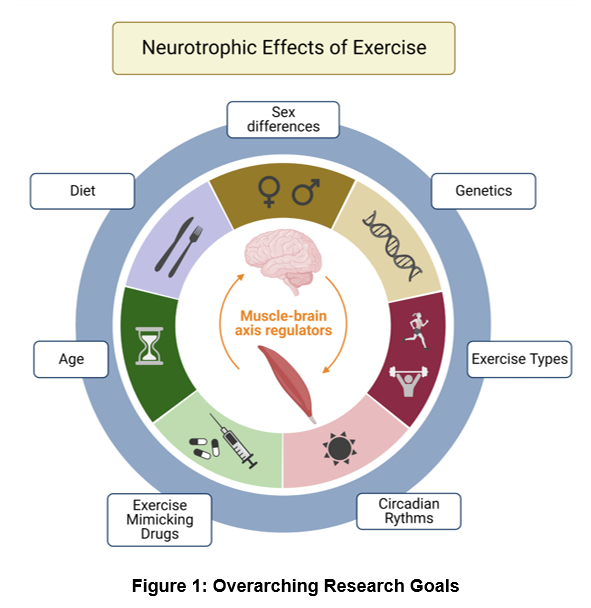Our Research
Precision Exercise Medicine for the Brain: Untangling the Neurotrophic Benefits of Exercise
Our work straddles the fields of neuroscience and metabolism, using an integrated physiology approach to understand diseases of the Central Nervous System (CNS). Regular exercise plays an essential role in maintaining healthy neurocognitive function and immunometabolism in the brain. However, the detailed molecular signals that communicate from the periphery to the brain during exercise remain poorly understood. We have recently identified specific skeletal muscle pathways that potentially drive the benefits of exercise in the aging and neurodegenerative disease brain. The ultimate goal of our lab is to understand the molecular determinants underlying the beneficial effects of exercise on the brain.
Skeletal muscle and the CNS share similar transcriptional alterations in metabolic pathways during aging, suggesting common pathways that culminate in age-associated metabolic drift. However, the complex molecular and endocrine mechanisms that underlie these global transcriptional changes, and the role they play in driving the established local and systemic benefits of exercise remains poorly understood.
We are building an integrated transcriptional precision medicine atlas between skeletal muscle and the CNS, determine the nodes of muscle metabolism that drive exercise-dependent neuroprotection and isolate the contribution of skeletal muscle protein homeostasis (proteostasis) to this process.
This new and substantively different approach to integrated neuroscience will contribute to a paradigm shift in our current view of inter-organ communication, directly integrating metabolic and transcriptional changes in the periphery to CNS function and health.
Long Term Goals
In the next 5-10 years, we will identify exactly how exercise is good for the brain. We are uniquely positioned to answer this question given our research strengths in neuroscience, exercise physiology and brain aging, as well as our powerful animal model with targeted activation of our newly identified inter-organ communication network that is also highly responsive to exercise (ie. the muscle to brain axis). Using differential network analysis of data from biochemical and phenotypic assays, machine learning and integrated network analyses, we will unravel how age, sex, diet, genetics, and other critical factors can modify brain responses to exercise (Figure 1). We will be working towards developing ‘exercise in a pill’ therapies for age- and neurodegenerative disease-associated cognitive decline (Figure 1).



